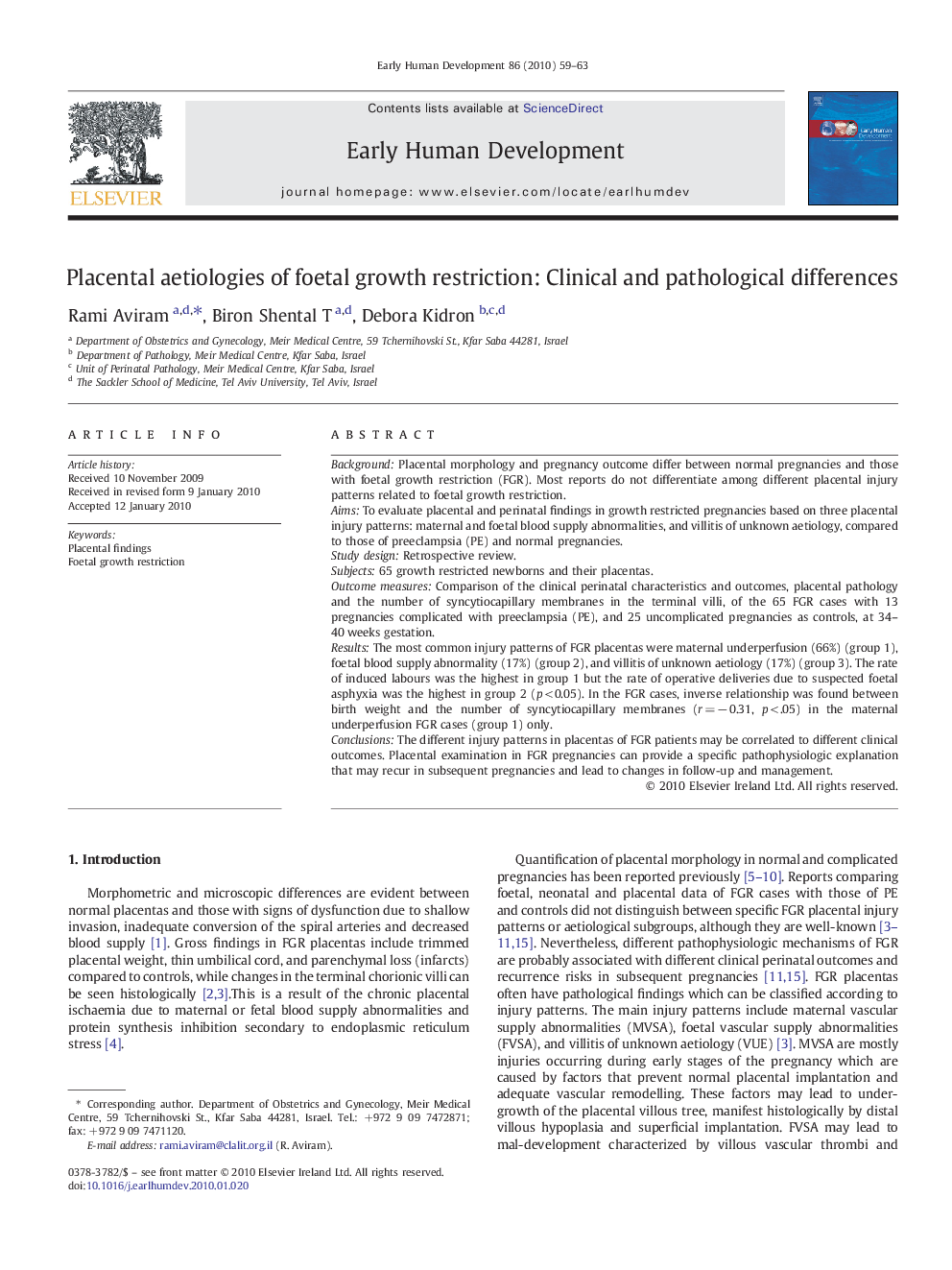| Article ID | Journal | Published Year | Pages | File Type |
|---|---|---|---|---|
| 3918479 | Early Human Development | 2010 | 5 Pages |
BackgroundPlacental morphology and pregnancy outcome differ between normal pregnancies and those with foetal growth restriction (FGR). Most reports do not differentiate among different placental injury patterns related to foetal growth restriction.AimsTo evaluate placental and perinatal findings in growth restricted pregnancies based on three placental injury patterns: maternal and foetal blood supply abnormalities, and villitis of unknown aetiology, compared to those of preeclampsia (PE) and normal pregnancies.Study designRetrospective review.Subjects65 growth restricted newborns and their placentas.Outcome measuresComparison of the clinical perinatal characteristics and outcomes, placental pathology and the number of syncytiocapillary membranes in the terminal villi, of the 65 FGR cases with 13 pregnancies complicated with preeclampsia (PE), and 25 uncomplicated pregnancies as controls, at 34–40 weeks gestation.ResultsThe most common injury patterns of FGR placentas were maternal underperfusion (66%) (group 1), foetal blood supply abnormality (17%) (group 2), and villitis of unknown aetiology (17%) (group 3). The rate of induced labours was the highest in group 1 but the rate of operative deliveries due to suspected foetal asphyxia was the highest in group 2 (p < 0.05). In the FGR cases, inverse relationship was found between birth weight and the number of syncytiocapillary membranes (r = − 0.31, p < .05) in the maternal underperfusion FGR cases (group 1) only.ConclusionsThe different injury patterns in placentas of FGR patients may be correlated to different clinical outcomes. Placental examination in FGR pregnancies can provide a specific pathophysiologic explanation that may recur in subsequent pregnancies and lead to changes in follow-up and management.
